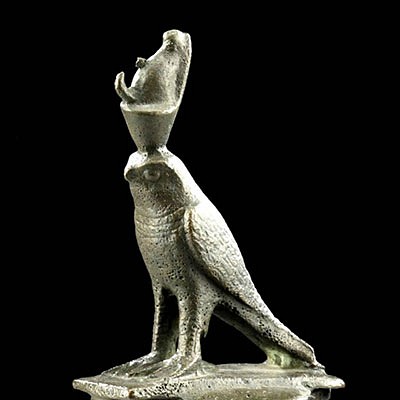Teotihuacan Terracotta Dog Effigy Vessel, TL'd
Lot 125
About Seller
Artemis Fine Arts
686 S Taylor Ave, Ste 106
Louisville, CO 80027
United States
Selling antiquities, ancient and ethnographic art online since 1993, Artemis Gallery specializes in Classical Antiquities (Egyptian, Greek, Roman, Near Eastern), Asian, Pre-Columbian, African / Tribal / Oceanographic art. Our extensive inventory includes pottery, stone, metal, wood, glass and textil...Read more
Estimate:
$7,000 - $9,000
Absentee vs Live bid
Two ways to bid:
- Leave a max absentee bid and the platform will bid on your behalf up to your maximum bid during the live auction.
- Bid live during the auction and your bids will be submitted real-time to the auctioneer.
Bid Increments
| Price | Bid Increment |
|---|---|
| $0 | $25 |
| $300 | $50 |
| $1,000 | $100 |
| $2,000 | $250 |
| $5,000 | $500 |
| $10,000 | $1,000 |
| $20,000 | $2,500 |
| $50,000 | $5,000 |
| $100,000 | $10,000 |
| $200,000 | $20,000 |
About Auction
By Artemis Fine Arts
Feb 11, 2021
Set Reminder
2021-02-11 12:00:00
2021-02-11 12:00:00
America/New_York
Bidsquare
Bidsquare : Animals in Art | Antiquity to Present Day
https://www.bidsquare.com/auctions/artemis-gallery/animals-in-art-antiquity-to-present-day-6391
From beloved pets to dedicated servants and vital livestock to symbolic imagery from many religions, animals frequently show up in the art of all cultures, ancient times to the present. Artemis Fine Arts info@artemisgallery.com
From beloved pets to dedicated servants and vital livestock to symbolic imagery from many religions, animals frequently show up in the art of all cultures, ancient times to the present. Artemis Fine Arts info@artemisgallery.com
- Lot Description
Pre-Columbian, Central Mexico, Teotihuacan, ca. 400 to 600 CE. An incredibly rare Teotihuacan spouted puppy vessel! Mold-made from orange terracotta that was very much prized in this region, this sizeable fighting dog is presented lying down with his rear legs curled up and his rather large front paws extended out before his chest. His noble visage is comprised of a cut ear (perhaps a wound from an altercation), an endearingly wrinkled face, and a pronounced snout. The sculptor made it clear that this is a male dog (note the genitalia); in addition this charming canine is adorned by a large collar with a huge crescent moon shaped pendant. Size: 8.5" L x 11.75" W x 6.875" H (21.6 cm x 29.8 cm x 17.5 cm)
According to the curatorial department of the Saint Louis Art Museum, "Dogs and dog-shaped vessels were often included in Teotihuacan burials, suggesting their domestication as members of the household. Their presence in central Mexico parallels a similar practice seen in some burials in West Mexico during the same period, where orangeware ceramics have also been found. Although different in form, the ceramic canines of Teotihuacan indicate a shared—if not imported—funerary practice." Note: this is NOT a Colima type Dog for consumption!!!
This piece has been tested using thermoluminescence (TL) analysis and has been found to be ancient and of the period stated. A full report will accompany purchase.
Provenance: private Hawaii, USA collection; ex-Arte Primitivo Gallery, New York, New York, USA
All items legal to buy/sell under U.S. Statute covering cultural patrimony Code 2600, CHAPTER 14, and are guaranteed to be as described or your money back.
A Certificate of Authenticity will accompany all winning bids.
We ship worldwide and handle all shipping in-house for your convenience.
#148303Repaired from multiple pieces with restoration over the break lines. TL hole on underside. Normal surface wear with a few scuffs and minute nicks/chips here and there. Areas of mineral deposits as shown. The cut ear may signify a loss; however, it may also have been an intended characteristic to indicate that he is is a fighting dog.Condition
- Shipping Info
-
All shipping is handled in-house for your convenience. Your invoice from Artemis Gallery will include shipping calculation instructions. If in doubt, please inquire BEFORE bidding for estimated shipping costs for individual items.
-
- Buyer's Premium



 EUR
EUR CAD
CAD AUD
AUD GBP
GBP MXN
MXN HKD
HKD CNY
CNY MYR
MYR SEK
SEK SGD
SGD CHF
CHF THB
THB
















